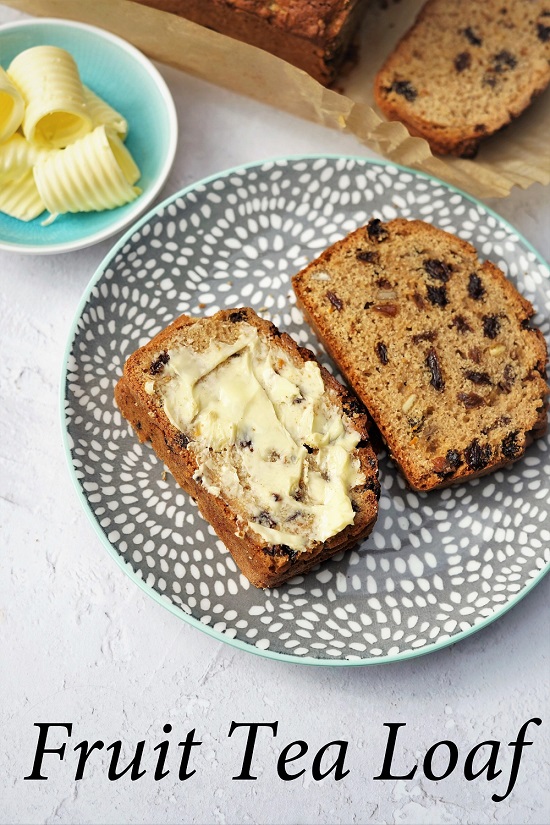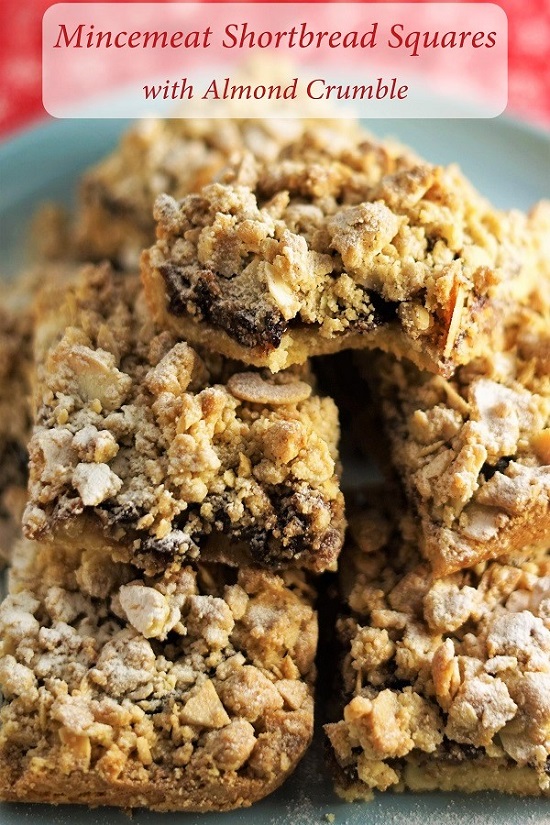Porter Cake
Porter Cake is a fruity and spicy cake that’s traditional in Ireland. It takes its name from the inclusion of dark porter beer which adds complexity of flavour and a hint of the pleasant bitterness ale drinkers love. If you don’t have porter, swap in stout.
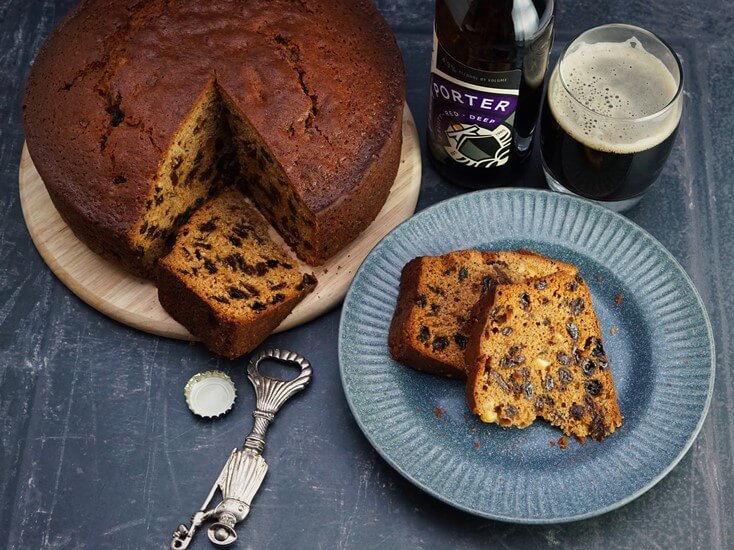
Simple enough for beginners, this lovely cake can be eaten straight away or left to mature for several days. Traditionally, it can be drizzled with extra porter or spirits like whisky, so it keeps even longer with an intensified boozy flavour.
Porter Cake can be made as a lighter alternative to Christmas cake. Or enjoy it throughout the year alongside a cuppa or something a little stronger.
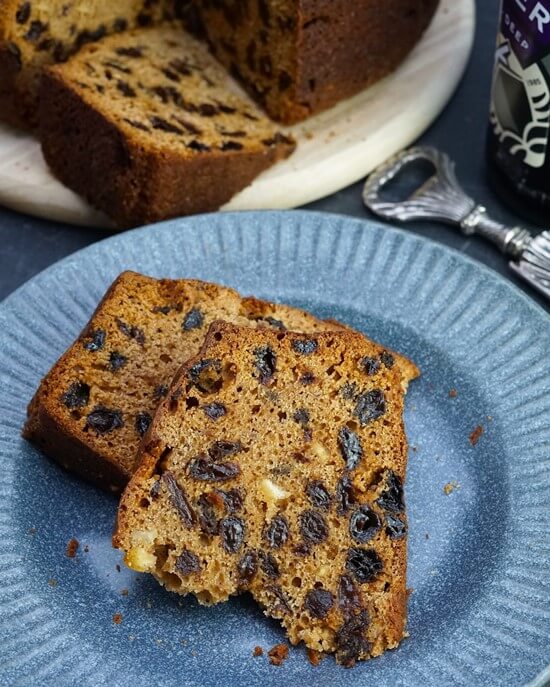
Jump to Recipe
IRISH PORTER CAKE
Although I love dark beers, including porters and stouts, I hadn’t heard of Porter Cake until earlier this year. I’d got myself a copy of Jane Grigson‘s fascinating The Observer Guide to British Cookery, first published in 1984. Divided into chapters covering different regions of the British Isles, my eye was drawn to Porter Cake or Císte Pórtair in the Ireland section.

[Note: neither Northern Ireland, which is part of the United Kingdom, nor the Republic of Ireland, which is an independent country, are part of Great Britain. In this context the title British Cookery refers to the geographical area known as the British Isles and not any political entity.]
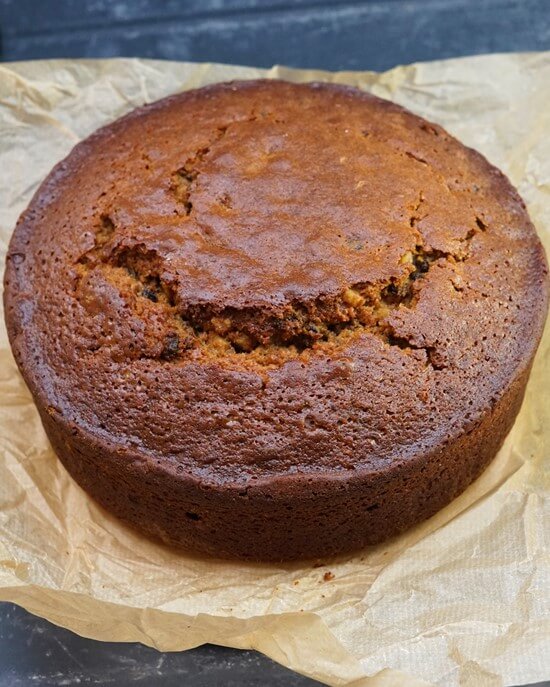
With lots of dried fruit and mixed spice, the cake seemed to me to be in the same vein as so many breads and cakes of the British Isles. Fruit Tea Loaf, Malt Loaf, Sultana Scones, and Fruit Soda Bread are just some of those I’ve written about. But what drew me to this one was the word porter. I love this old-fashioned, dark ale which is enjoying something of a revival. The idea of soaking sultanas, raisins and dried peel in the heated beer intrigued me.
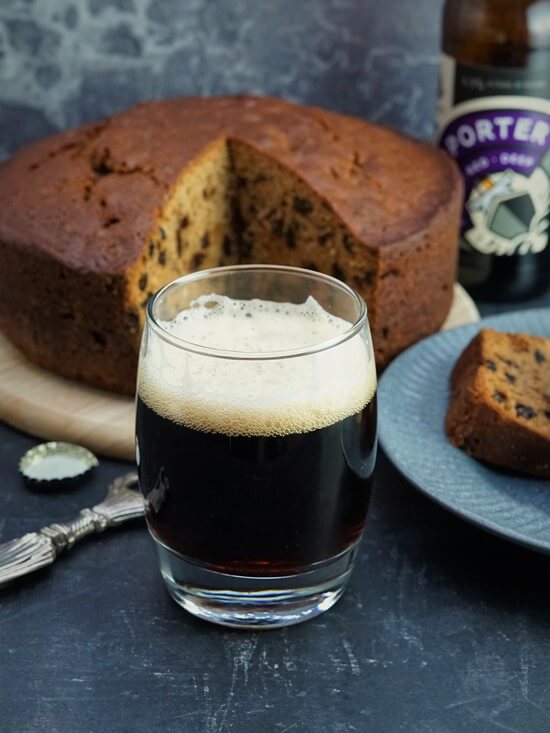
I’ve taken Grigson’s recipe, which she attributes to Theodora Fitzgibbons, as my starting point. The ingredients I’ve barely changed but I have simplified her method.
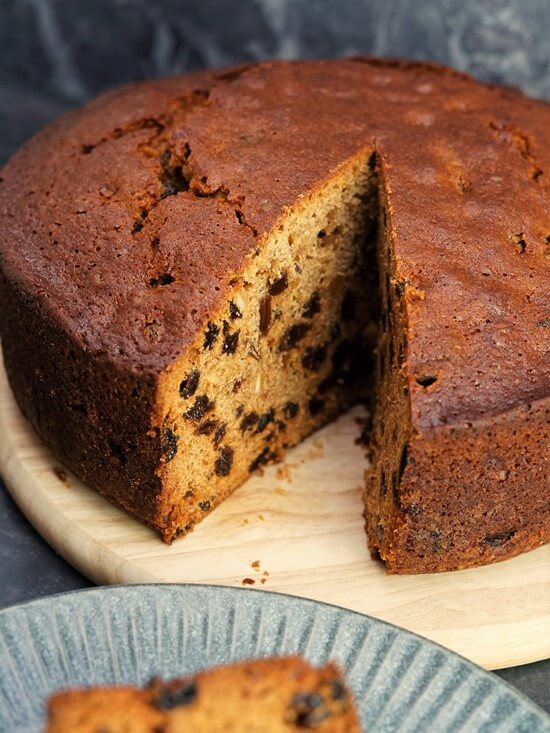
The result was a lovely, rich cake, full of fruit and sweet, spicy flavour plus complexity and hints of pleasant bitterness brought by the porter beer.
PORTER OR STOUT?
Many modern recipes for Porter Cake, and even some cakes you can buy, actually contain stout rather than porter. Even Grigson says that ‘today’ Guinness stout is used. But there are lots of porters available now, especially from craft brewers, so why not stick to the original?
Although I love both porters and stouts, I’m not an expert on the technical and historical differences between the two types of dark beer. In my background research for this post, I discovered that the matter isn’t even settled among afficionados. If you want to understand the debate in detail, this post from Craftbeering.com seems like a good place to start.

But, for most of us, I think their most relevant point when choosing whether to use stout or porter in this cake is the following generalisation. Whereas modern stouts tend to have a ‘coffee like aroma and flavour’, porters are likely to be more mellow, ‘along the lines of soft mocha and milk chocolate.’
My favourite porter is Plum Porter, made here in north Staffordshire by Titanic Brewery. Dark, fruity and with bags of flavour, I thought it would work brilliantly in a sweet, spicy cake full of rich dried fruit.

You can also use a plain porter or stout, or a different flavoured one. Chocolate, vanilla, coffee, or spicy ones should all work. A stronger flavour will be more noticeable in the finished cake and a less bitter beer more subtle.
If there are any local independent brewers near you making porter, why not give them a go?
EASY PORTER CAKE
Although it will be several hours between you starting to make this lovely cake and being able to tuck in (or even days if you want to mature it), pretty much all of this is hands-off time. It should take just over 2 hours to bake and you need to add a couple of cooling periods on top of that. However, I think you’ll love how quick and simple the actual work is.
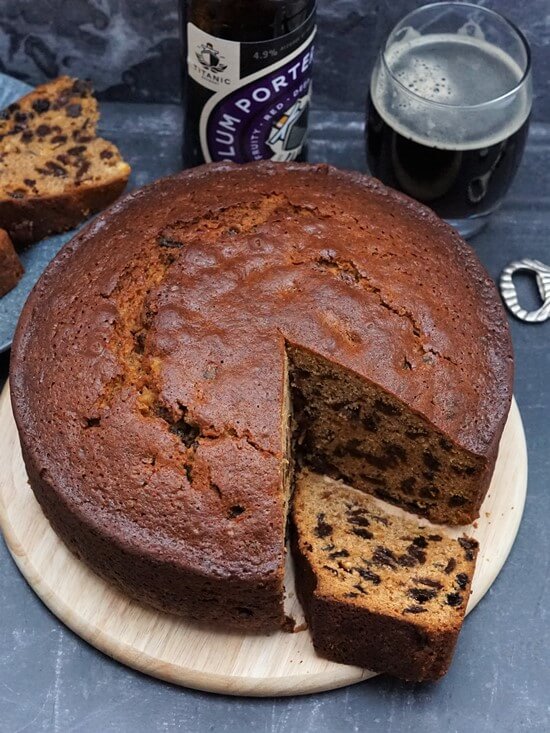
You’ll find a detailed recipe card at the end of this post: Jump to Recipe. But I recommend you first read the following step-by-step guide with images and tips.
HEAT & SOAK THE DRIED FRUIT
We start by putting into a saucepan all the dried fruit, lots of butter, soft brown sugar, the zest of an orange, and 300 ml of porter. For the dried fruit I’ve used sultanas, raisins and mixed peel. But you can swap in your own favourites. Likewise use lemon (as in the recipe that inspired my version) instead of orange if you prefer. I recommend soft brown sugar as its toffee-like notes complement the rich flavours so well.
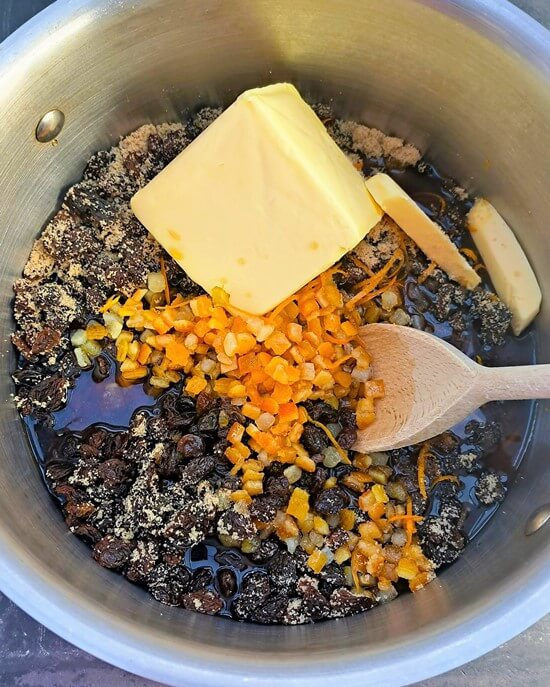
Then we put the mixture over medium-high heat, stirring occasionally, until the butter melts and the sugar is dissolved. It doesn’t need to boil and, when done, you should take the pan off the heat and leave to cool. During this time the fruit will get juicily plump, taking up the flavours of the porter. If you want to speed up the cooling process, transfer the mixture from the warm saucepan into another container.
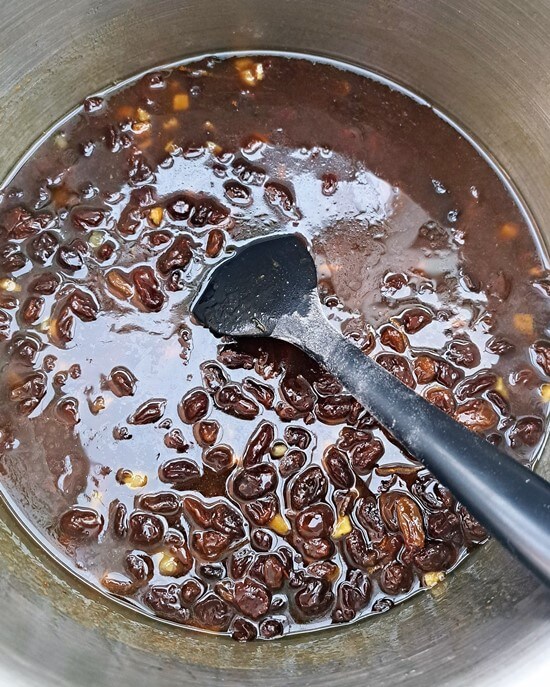
The mixture is ready when it’s at ‘blood heat’. This means you should be able to insert a (clean) finger and very comfortably hold it there.
While it’s cooling, you can be preheating your oven and prepping a cake tin. The recipe makes one large Porter Cake that should serve at least 16 people generously. I’ve used a round, springform tin that’s 23 centimetres in diameter. If you prefer a square cake, then a 20 x 20 cm tin should be correct.

To make absolutely sure I’ll be able to turn the cake out, I line the base and sides with baking paper then brush with melted butter. Just in case the cake rises a lot, I cut the paper so it comes up higher than the sides of the tin.
FLOUR & SPICES
Another thing you can be doing while the fruit mixture is getting to blood heat is sift together the flour and spices with a pinch of salt. I use self-raising flour, but you can substitute plain flour plus baking powder. Follow the instructions on your baking powder pack to see how much you need to add for 500 grams of flour.
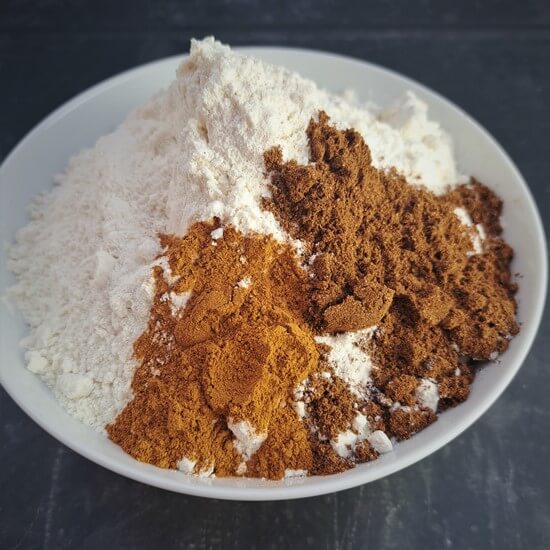
The spices included in a Porter Cake are usually that ready-made blend particular to the British Isles known as ‘mixed spice’. This will contain, in varying proportions, spices like ginger, cloves, cinnamon, allspice, nutmeg, and mace. As with many of my spicy breads and cakes, I like to include extra cinnamon too. In total, you’ll need three generous, rounded teaspoons of spice.
Do make sure you sift the flour and spices into a LARGE bowl. It needs to be big enough to hold all the wet and dry ingredients plus have extra space so you can mix everything together.
COMBINING WET & DRY INGREDIENTS
When the sweet, fruity, porter mixture has cooled we can beat in four eggs. Obviously, we can’t do this while the mixture’s hot or we’d scrambled them. For this and the next step, electric beaters rather than doing it by hand will save some work.

After the eggs have been beaten in, make a well in the centre of the sifted dry ingredients and pour in the wet mixture. Now go back in with your beaters and mix again for several minutes to thoroughly combine everything. There should be no dry bits of flour visible.

When that’s done, pour into your prepared cake tin and pop it in the preheated oven. So that it’s easier to manoeuvre, I stand the cake tin in a large baking tray.

BAKING PORTER CAKE
Although ovens do vary, your Porter Cake is likely to take a minimum of 2 hours and probably a little longer. For the first hour, bake it at 160 C / 140 Fan oven / Gas 3. Then reduce the temperature to 150 C / 130 Fan oven / Gas 2. If yours is looking too dark on top before it’s ready, cover it with a double layer of baking paper. Because my oven bakes a little unevenly, I turn the tin 90 degrees halfway through.
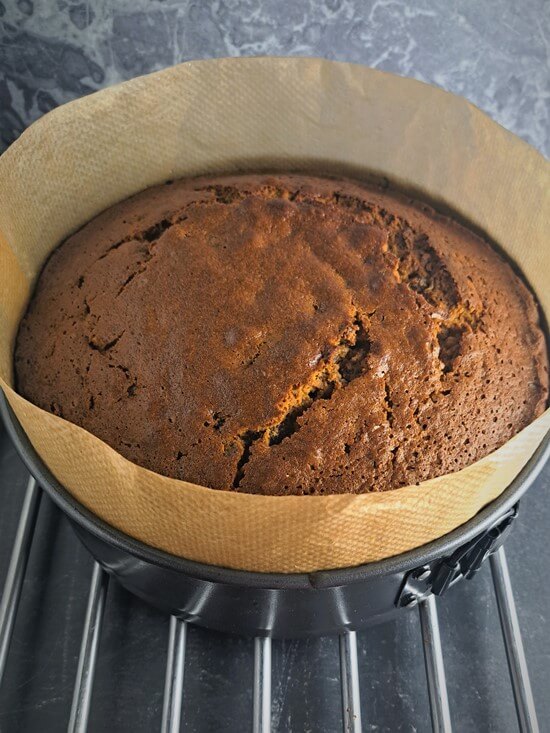
After the 2 hours are up, insert a skewer into centre. If it comes out clean, then the cake is ready. Skewer not clean? Put the cake back in the oven and give it another 10 – 15 minutes before checking again. If the cake’s nearly there, you can put it back in but with the oven switched off.
When it’s finished baking, take out of the oven but leave the cake in the tin until completely cold. Then you can remove it and peel off the paper.
STORING & MATURING PORTER CAKE
While Porter Cake can be eaten straight away once cold, it’s traditional to let it mature for several days. The recipe which inspired my version recommends that you store it ‘for a week at least before eating’. Well, I’m afraid I don’t have that much willpower! But I did manage to keep my hands off for two days. To ensure that the cake stayed lovely and moist, I wrapped it in a double layer of paper then a double layer of foil before putting it in an airtight tin.
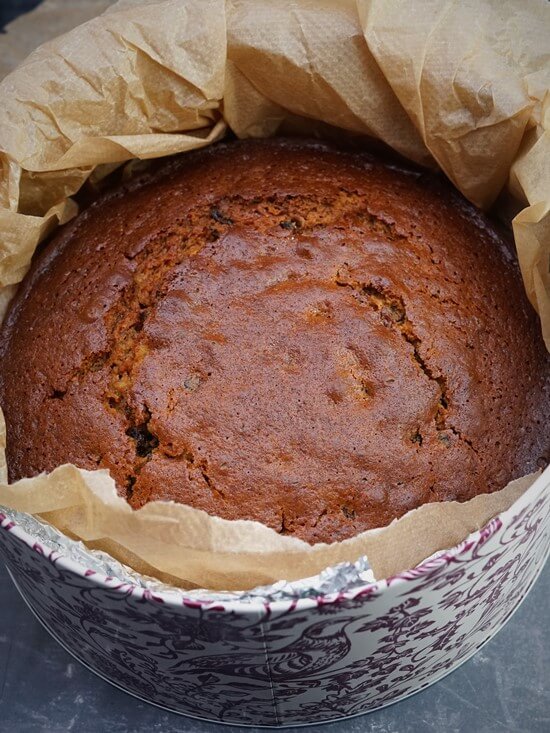
A traditional way of extending the life of the cake, as well as adding extra boozy flavour, is to ‘feed’ it. Just as with Christmas cakes, you can pour over a little extra porter, or a spirit such as whisky, once a week before rewrapping. It’s not something I’ve tried yet. But I’d love to hear if you do this with Christmas cake or Porter Cake.
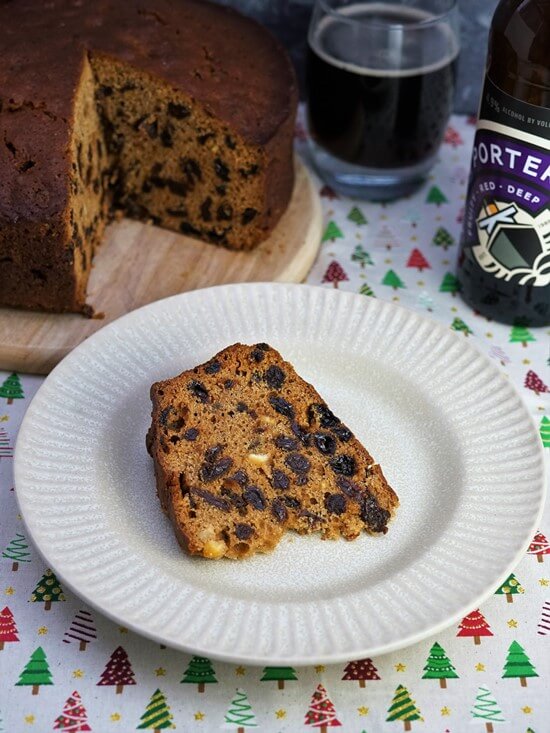
I must confess that while I love fruit cakes, traditional Christmas cakes are a little heavy for my taste. But Porter Cake is a great, lighter alternative. Full of fruit and spice, it would make a lovely seasonal treat.
SERVING
So easy to make though, there’s no reason why you can’t enjoy it throughout the year. Perhaps alongside a cuppa. Or maybe with something a little stronger like a glass of porter, brandy, or whisky. In some parts of the British Isles, cheese is eaten alongside fruit cake so you could even have some with a cheese board. Many of us also like it buttered.
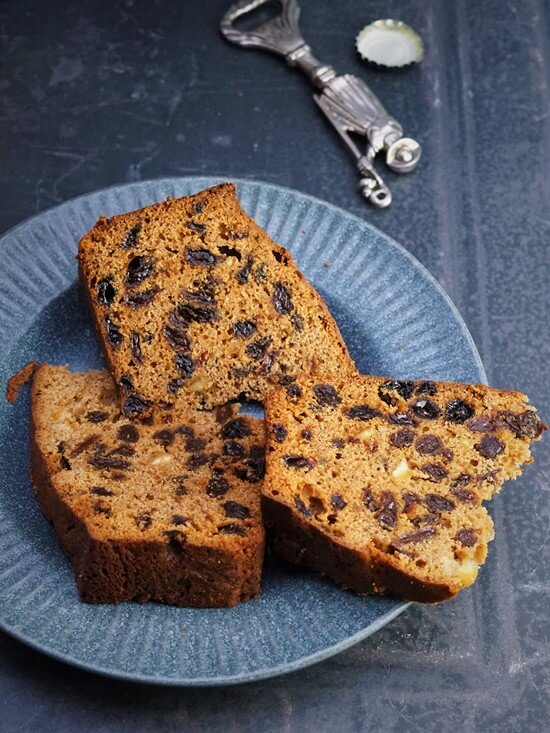
I made this Porter Cake on a Friday and it’s still tasting lovely and moist as I write this on Tuesday. As there’s only so much cake even our greedy household of two can eat, I’ve cut half the cake into eight generous slices, wrapped them individually and put into a container in the freezer.
So, we’ll be able to enjoy this fruity, spicy, lightly beery delight for a good while yet. I’m even thinking of heating some in the microwave and serving with lashings of custard or cream.
If you’ve made this recipe, I’d love to hear what you thought. Please leave a comment and rating.

Porter Cake
A traditional Irish fruit cake, Porter Cake is spicy with hints of dark porter beer. Enjoy as a lighter Christmas cake or at any time with a cuppa or a glass of something stronger.
Use stout if you can't get porter.
Well wrapped and kept in a tin, the cake will taste best if left to mature for a couple of days (or even several weeks: see Recipe Notes).
Ingredients
- 375 g soft brown sugar
- 250 g raisins
- 250 g sultanas
- 125 g dried mixed peel
- 250 g butter plus extra for greasing
- 1 orange, zest only
- 300 ml porter or stout
- 500 g self-raising flour
- 2 rounded tsp mixed spice
- 1 rounded tsp ground cinnamon or more mixed spice
- 1 large pinch salt
- 4 large eggs
Instructions
-
Put the sugar, all the dried fruits, butter, orange zest, porter or stout into a saucepan over medium-high heat.
Heat, stirring occasionally, until the butter melts. Take off the heat and set aside to cool to blood heat (i.e. it should feel comfortable, not hot, to insert a clean finger into the mixture).
Complete the next 2 steps while it's cooling.
-
Preheat the oven to 160 C / 140 Fan / Gas 3 with a shelf in the middle position.
Line the bottom and sides of a 23cm round cake tin with baking paper and brush with melted butter.
-
Stir together the self-raising flour, mixed spice, cinnamon and salt then sift into a large, roomy bowl then set aside.
-
When the fruit mixture is at blood heat, crack in the eggs and beat well (ideally with electric beaters) to combine.
-
Make a well in the sifted flour and spices, pour in the fruit and egg mixture then beat again for a few minutes until thoroughly mixed. Make sure there are no bits of dry flour.
-
Transfer the mixture to the prepared tin, put in the preheated oven and bake for 1 hour.
After 1 hour, reduce the heat to 150 C / 130 Fan / Gas 2 and bake for another hour.
Tip: if the top of the cake is darkening too much cover it with a double layer of baking paper.
-
After a total of 2 hours baking, test with a skewer. If it comes out clean, then the cake is ready. If not, return to the oven for another 10-15 minutes and check again. If nearly ready, then you can switch off the oven but leave the cake in for the extra time.
-
When the cake is ready, remove from the oven but leave in the tin until completely cold. Then take it out of the cake tin and peel off the paper.
The cake can be eaten straight away but its flavour will improve after maturing for 24 - 48 hours.
To mature, wrap it in a double layer of greaseproof paper then a double layer of foil, and put in an airtight container. Should keep for at least a week. See Recipe Notes for 'feeding' the cake with alcohol and keeping for longer.
Can also be frozen in portions. Defrost thoroughly before serving, or microwave and serve hot with custard or cream.
Recipe Notes
Traditionally, Porter Cake can be 'fed' weekly with more beer (or spirits such as brandy, like a Christmas cake). This should add flavour, keep it moist and improve its keeping qualities. After sprinkling a few teaspoons over the uncut cake, be sure to leave it out to dry before rewrapping and storing in an airtight container.
RELATED RECIPES




